The Haggadah and Healing
How to bring the seder to bear on your experience of illness – and bring your experience of illness to bear on your seder.

Remember that you were a slave in the land of Egypt, and the Lord your God brought you out with a mighty hand and an outstretched arm…
Deut. 5:15
Reciting the Passover story reminds us not only of a transcendent moment in the history of the Jews, but of transformative times of misery and suffering ‐ and emergence and deliverance ‐ in our own lives. Reflecting on those moments in light of the great themes and symbols of this festival provides a wonderful opportunity to achieve understanding and healing.
The word Haggadah is a gerund: it means “the telling.” By linking this process with personal knowledge, we can open the door to a richer and more nuanced experience of Passover.
Early in the seder, the Haggadah introduces the famous homily about the four children. This quartet signifies that those gathered around the table bring their individual experiences and attitudes. The rabbis who formalized the seder were acutely aware of the need to shape the telling to the concerns and levels of the participants.
Though the evening has a definite order (seder), the Haggadah should not be rote recitation, but rather dynamic exploration that involves questioning, probing, empathizing, and creative interpreting. The Haggadah provides the armature on which to construct the story.
With this in mind, here are some ideas about how everyone who is struggling with illness might draw new meaning from the seder and, simultaneously, contribute to it.
Iʹve focused on two key elements of the seder: the ten plagues and the three essential symbols. I hope that these suggestions will encourage you to bring the seder to bear on your experience of illness ‐ and to bring your experience of illness to bear on your seder.
The Ten Plagues
For those coping with illness, undergoing treatment, or seeking recovery, the ten plagues elicit a wide range of reactions:
- Empathy with the Egyptians: ʺI, too, have known blood, boils, and deep darkness. Any personʹs illness is a call to compassion and assistance.ʺ
- Doubt and questioning: ʺWhere is the justice in Godʹs repeated hardening of Pharaohʹs heart? In the suffering of those who were innocent? In any pain and disease?ʺ
- Comfort: ʺAt least here, suffering was time‐limited and space‐bound. It was part of a divine plan. It was not random, unending or meaningless.ʺ
- Terror: ʺThe scope and intensity of the plagues are truly horrifying. They reach from the young to the old, from the heavens to the depths of the sea, from simple animals to Pharaohʹs royal family.ʺ Of course, there can be many other emotional, intellectual, spiritual and psychological
responses. Rather than race mechanically through the recitation of the plagues, select some of the following ideas, as appropriate and helpful. - Listen closely to the name of each plague. Imagine the reality; digest the possibilities and implications of each one.
- Explore the needs of those plagued today, particularly those who suffer AIDS, cancer, heart disease and other serious illnesses and chronic conditions.
- Discuss who among you is suffering or has suffered serious illness. Explore what it means for them, and what they need from, and can offer, you.
- Sing songs of healing and strength, such as Esa Einay, Im Amarti Mata Ragli, Abat Shaʹalti and Elekha Hashem Ekra.
- Recall those who died from serious illness since last Passover. Remember their struggles, challenges, resources and legacies.
- Explore the challenges of each Biblical plague and relate those qualities or characteristics to those of illnesses experienced by those at the seder.
- Analyze the differences between the ten plagues and your experience: contrast the historic, cosmic and ʺunrealʺ aspects of the former with the deeply personal and all‐too‐real elements of the latter.
- Examine the plagues as a 10‐stage process, a flow in horribleness from blood to the killing of the firstborn. Compose a continuum that reflects your experience, either symbolically or literally.
- Express the pain of the plagues and their reflection in your own suffering. Express, too, your thankfUlness for recovery and for the pleasure and privilege of celebrating our freedom even as we experience our slavery.
The Three Key Symbols
Shortly after the recitation of the plagues, the text introduces the three central symbols of the seder: the sacrificial Pesach (Passover) offering (originally Iamb), the matzah (unleavened bread) and the marror (bitter herbs).
I suggest a 3‐step process for this part of the ceremony: read the Haggadah itself; draw out the connections and associations among the three symbols; and superimpose the framework provided by the three symbols on your own experience.
The Pesach Offering
This symbol works on at least three levels:
- The miracle: God passes over (pasach) and spares the Israelites during that most terrifying plague, the killing of the firstborn. This embodies redemption and providential protection but also terror and tragedy.
- The actual sacrifice: The shankbone recalls the original Pesach offering, which the soon-to‐be freed Israelites prepared while still in Egypt.
- The days of the Temple: The Passover Feast was consumed by throngs of Israelites at the Temple in Jerusalem in a major annual pilgrimage.
Matzah
The unleavened bread enjoys several paradoxical dual identities:
- The bread of affliction and the bread of redemption; symbol of humility, vulnerability and servitude ‐ and also freedom, choice, being Godʹs children;
- A reminder of the Israelitesʹ total lack of preparedness, and yet their total willingness and readiness;
- A sign of Godʹs self‐revelation and Israelʹs self‐discovery.
The matzah recalls the stunningly abrupt divine deliverance ‐ but equally, the incredibly trusting act of faith of the Israelites to follow their invisible God into the wilderness, even after 400 long years of enslavement.
Marror
Of the three symbols, this is the easiest for us to appreciate. The Jewish experience in recent times and the experience of many other people and nations who suffer hardship make it particularly accessible. Note that the bitterness is described not only in terms of excruciatingly hard labor, but as the ruthless oppression of one people by another.
As you look for the connections among the three symbols, you might find it helpful to create a chart (ahead of time), like the one below.
| PESACH | MATZAH | MARROR |
|---|---|---|
| Future | Present | Past |
| Relief | Reorganizing | Pain |
| Redemption | Thankfulness | Bitterness |
| Miracles | Positive response, Adaptive | Oppression |
| Recovery, Hope | Treatment | Diagnosis |
| Sobriety | Recovery | Addiction |
And whatever else you think of!
The Haggadah recommends that ʺin every generation, every individual should feel as though he or she had actually been redeemed from Egypt.ʺ This sentence empowers those who have struggled with illness to rethink the three symbols through the prism of illness and recovery. Relate the many aspects ‐ some of them paradoxical and dualistic, as above ‐ of these intensely personal experiences to the national story of slavery and freedom:
- Do you feel that you are still enslaved? In what ways have you been set free?
- If you had to name three actual, physical symbols to parallel those of the seder, what would they be? What encapsulates both your confinement and your delivery? What embodies your suffering and bitterness?
- As you articulate aspects of your odyssey with illness, treatment and recovery, try to relate them to the Exodus story and the liberation of the Hebrew slaves: How was their experience like yours? What emotional, psychological and spiritual processes did they have to undergo that reflect your own?
Your midrash ‐ your personal interpretation based on your particular experience ‐ links your history to that of the eternal narrative. It is a unique one that adds to the meaning of Passover for all assembled. ʺIn each generationʺ means nothing if not here and now, andʺ every individualʺ implies all those gathered at your table and their deepest, most profound experiences.
The Haggadah is not just a chronicle of a bygone historic moment. It is a script for a live, unfolding drama, with all of us as players.
Resources for All New Yorkers
Our experts are available for conversations. It’s all part of The Jewish Board’s continuum of care to help ensure that New Yorkers don’t have to navigate life’s difficulties alone.
Contact Us Today













